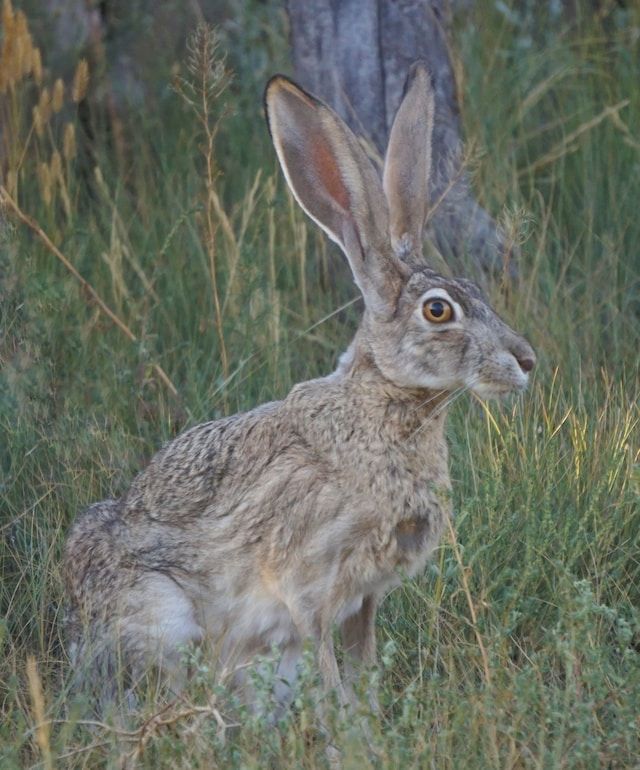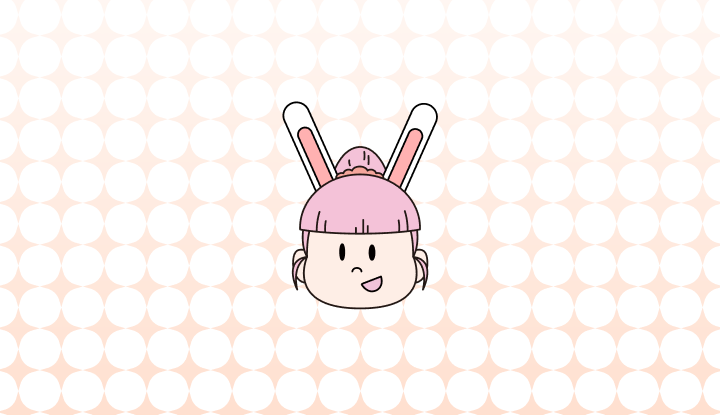「兎」は英語で文脈によって「rabbit」、「bunny」、「hare」、「cony」などで表現できます。
可愛い兎は「rabbit」だけじゃなくて色んな英語表現があります。それぞれの意味と使用について下記で習ってみましょう。
Rabbit
「Rabbit」は長い耳と大きな前歯を持ち、長い後ろ足で走り回る小さな動物を指します。
多様な種類の兎を表せる広い概念の表現であります。
例文
- She decided to adopt a rabbit as a companion pet.(彼女はペットとして兎を養子にすることに決めた。)
- Her garden suffered some damage from a curious rabbit munching on vegetables. (彼女の庭は好奇心旺盛な兎が野菜をかじって少し被害を受けた。)
- Rabbits are known for their agility and ability to quickly change direction.(兎たちは彼らの敏捷性と速く方向を転換する能力で知られている。)
Bunny
「Bunny」は兎を表す他の表現で、兎を可愛く呼ぶ時使う表現です。特に子兎や小さい兎を表します。日常的に使われる非格式体表現です。
例文
- She decided to surprise her niece with a fluffy bunny as a birthday gift. (彼女は誕生日プレゼントにふわふわした兎を準備して甥を驚かせることにした。)
- The pet store offered a variety of toys and treats for pet bunnies. (ペットストアーは兎のための様々なおもちゃとおやつを販売した。)
- During the spring, the neighborhood was visited by a family of wild bunnies. (春に町に野兎家族が訪れた。)
Hare

「Hare」はとても早くて長い耳を持つ大きな兎科の動物を指します。
上記の写真のように一般的に考える兎より多くて強く見えます。
例文
- Hares change color with the seasons to blend into their surroundings. (兎たちは周囲の環境によく混ざるために季節によって毛色を変える。)
- During the winter, the hare's fur becomes white to camouflage in the snowy landscape. (冬に兎の毛は雪に覆われた風景の中で偽装するために白に変わる。)
- The farmer spotted a hare nibbling on crops near the edge of the field. (農夫は畑の端の近くで農作物をかじって食べる兎を発見した。)
Cony
「Cony」は兎自体、または兎の毛を指します。
昔々使っていた古語体なので、歴史的、または文学的な文脈で主に発見されます。
例文
- The cony's large ears serve as a vital tool for detecting potential dangers in its environment.(兎の大きな耳は環境の中の潜在的危険を探知する上で重要な道具となる。)
- A gentle cony was the main character in the heartwarming children's book.(穏やかな兎が心温まる児童向け本の主人公だった。)
- Children giggled as they watched the cony hop around its enclosure at the wildlife sanctuary. (野生動物保護所の檻の中で走り回る兎を見て子供たちがキャハハと笑った。)
まとめ
「兎」を英語で書く時何が正しいかわからなくなったら、AI英語文法チェッカーEngramをお試しください。AIが文法エラーや不自然な表現を直してくれます。
無料英文チェッカー / 英語校正 - Engram
Engramの無料英文チェッカーと英文校正ツールを使用して、翻訳機の物足りない結果を校正・添削してみましょう。 文法、正書法の誤りとあいまいな英語表現をAIが自然に校正します。

参考資料:
토끼 영어로 (Rabbit, Bunny, Hare, Cony 차이와 뜻)
‘토끼’는 영어로 맥락에 따라 rabbit, bunny, hare, cony 등으로 표현됩니다.귀여운 토끼는 rabbit 뿐만 아니라 다양한 영어 이름을 가지고 있습니다. 각각 어떤 맥락에서 어떤 의미로 사용되는지 아래에서 함께 알아보도록 합시다.

rabbit
1. a small animal with long ears and large front teeth that moves by jumping on…

bunny
1. a rabbit 2. a rabbit

hare
1. an animal like a large rabbit that can run very fast and has long ears 2. to…

cony
1. a rabbit, or the fur of a rabbit 2. a rabbit, or the fur of a rabbit















